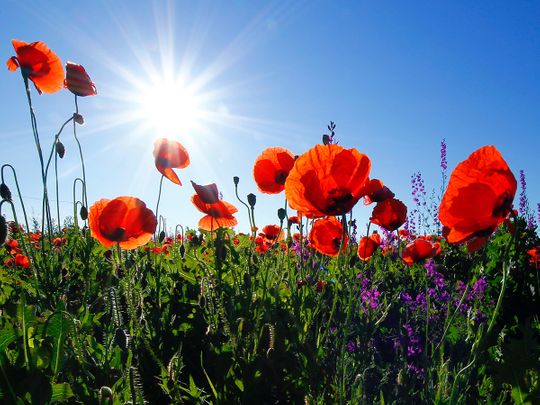
When Kate Middleton got married to Prince William, the UK's Duke of Cambridge, she was holding a wedding bouquet. Did you know that every flower in it held some sort of significance?
Click start to play today’s Word Search, where you can spot a whole variety of flowers.
The bouquet the Duchess of Cambridge held, had all-white flowers. It included lilies of the valley, an ode to late British monarch Queen Victoria, who included it in her own bridal bouquet; sweet Williams, an obvious nod to Middleton’s groom; hyacinths, which represent the constancy of love; and ivy, which symbolises fidelity, friendship and marriage. The bouquet also had a sprig of myrtle, as part of a royal tradition since Queen Victoria. The flower came from the Queen’s own 170-year-old garden, and represents love.
Who knew flowers had such rich, complex meaning behind their delicate facades?
Just as interesting is a flower that has done as much good as harm: the poppy represents a true paradox. In 1804, German pharmacist Friedrich Serturner isolated opium from this flower, which later became the painkiller morphine. He originally named it morpheum, for the Greek deity Morpheus, who reigns over dreams. Such was the effect of opium, which created an epidemic, as people became addicted to the potent painkiller.
More recently, however, when the First World War was underway in 1914, and soldiers began to dig trenches and trample across fields and farmland across Europe, something interesting happened. Poppy seeds, which can lay dormant for hundreds of years, burst into bloom at Flanders Field, near Ypres, in 1915 – the hot spring conditions, and disturbed soil, were optimal conditions for their growth.
The scene was so poignant, a Canadian soldier named Major John McCrae immortalised the scene in a poem about it, called Flanders Field. Today, poppies are commonly used as symbols of remembrance for those who fought and died in the First World War, and other conflicts across the world.
Another flower you see everywhere, has a bloody history behind it: the rose. You likely already know that roses symbolise love – they’re used in perfumes and spring up in flower stalls around the world on Valentine’s Day. But the rose is also the symbol of some of the bloodiest civil wars in English history.
Known as the Wars of the Roses, two houses – York and Lancaster – were embroiled in battles that spanned decades, as they fought for the English throne. While the Yorkists used the white rose as their symbol, the victory of Henry Tudor (a distant Lancastrian) at the Battle of Bosworth led to the introduction of the red rose as the Lancaster symbol. Eventually, when Tudor married Elizabeth of York, the wars finally came to an end, and both the white and red roses were combined to make the Tudor rose – a symbol of unity between the two houses at last.
What do you think of the language of flowers? Play today’s Word Search and tell us at games@gulfnews.com.







